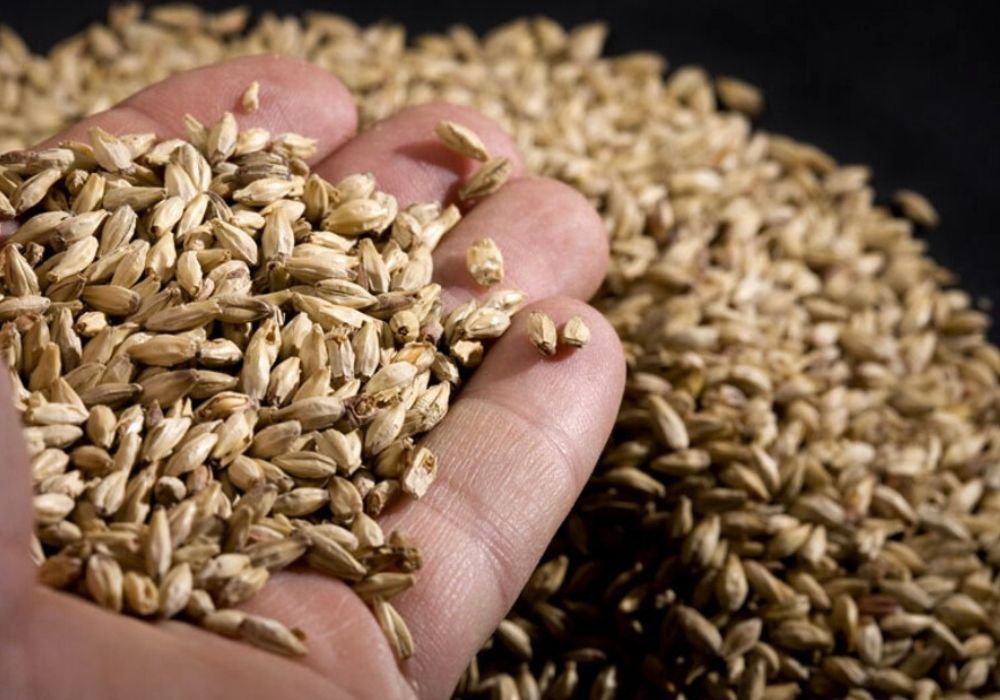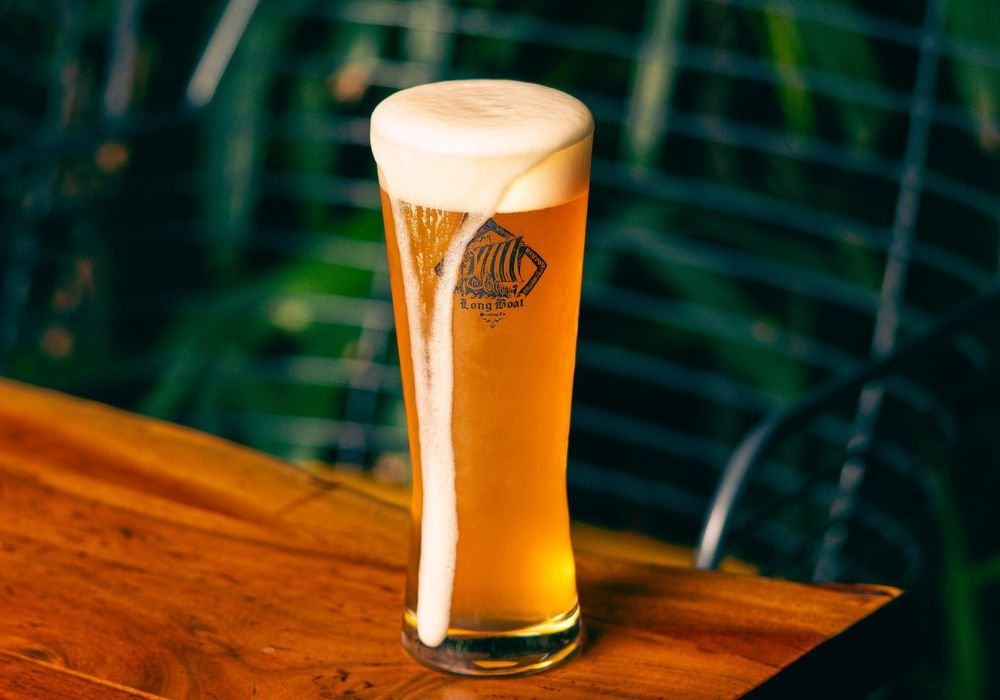The Changing Objectives of Barley Breeding

Horst Dornbusch
Leading Author, Speaker & International Beer Consultant
Horst Dornbusch is internationally known in the brewing industry as a consultant, brew equipment designer, beer recipe creator, brewer, beer judge, event speaker, and multilingual author. He was born in Germany and educated in both Germany and the United States. He is now a German-American dual citizen and lives in Massachusetts, USA. Over the past quarter of a century, he has published hundreds of articles, as well as books, about the technical, sensory, and economic aspects of beer and beer-making. His books include PROST! The Story of German Beer (1997), Altbier (1998), Bavarian Helles (2000), The Ultimate Almanac of World Beer Recipes (2010), Die Großen Biersorten der BRAUWELT® (2014), Beer Styles from around the World (2015), and Das Große BRAUWELT® Lexikon der Biersorten (forthcoming in the fall of 2017).
In addition, he was the Associate Editor and major contributor to the acclaimed 900-page reference work, The Oxford Companion to Beer (2011). Currently, he is working with Thomas-Kraus Weyermann on a book about dark lager brewing.
Those of you who ever had to read Gaius Julius Caesar’s commentary about the Gallic Wars may recall that, from this rascal’s perspective, “Gallia omnia est divisa in partes tres” (all of Gall is divided into three parts). Well, from a modern brewer’s perspective, “orbis omnium est divisum in partes duas,” that is, the whole world is divided into two parts, the grape latitudes and the grain latitudes.
One part has given rise to the earth’s wine cultures; the other, to the earth’s beer cultures. To be sure, there are overlaps between the two, but, as a broad generalization, this dichotomy holds true. While the vintners count on a more or less predictable annual yield from their vineyards to make their libations, maltsters and brewers count on an equally dependable harvest of grains, mostly barley, from the fields, for theirs.
Because the division of the world into wine and beer regions is largely based on climate, modern climate change has the potential to play havoc with our phyllosphere; and this could draw into question the reliability of the future supply of brewing barley… unless, of course, humans can figure out how to make barley varieties more adaptive to new, often extreme conditions. This article is about the tools humans have used — from antiquity to modernity — to form the barley plant to serve their beer-making purposes under varying climate conditions.
Humans and Barley:
How It all Started
“Neolithic Revolution” is the term we apply to the transition of human society and culture from the fog of prehistory — when our species roamed the land as hunters and gatherers in small nomadic bands — to the bright light of civilization — when we started to live as farmers and herders in stable agricultural settlements. This metamorphosis first happened about 10 to 12 thousand years ago in Mesopotamia, a place between the rivers Euphrates and Tigris, which is now part of Iraq; and the civilization that accomplished this transformation we now call the Sumerians. Anthropologists and archaeologists consider the desire of early humans to increase the security of their food supply as the most likely drive behind this monumental change.
Before the Revolution, nature grew what flora and fauna she choose. For humans, who haphazardly chased the stag and collected wild plants, finding enough to eat was a constant challenge, and life was uncertain. After the Revolution, by contrast, humans took charge of their food supply by selecting what and how much would be planted in the field, and what would be raised and bred in the pasture. By purposefully manipulating nature to produce what she otherwise might not have, alimentation became more manageable and predictable. Now the food supply could be adjusted to its demand; and not the other way around.
Among the most important crops the Sumerians domesticated were members of the grass family, especially, barley (Hordeum vulgare), but also spelt (a forerunner of modern wheat), emmer, and einkorn. Apparently, Sumerian farmers were eventually so successful that they produced twice as much barley than they needed, which created the problem of storing and preserving their surpluses. This soon led to the invention of both baking and brewing. To keep their barley from going moldy, they figured out how to turn it into a very dry, hardtack-like bread called bapir, and into a fermented beverage, beer.
As farmers selected seeds from only those individuals that made the best bread and beer, they inadvertently started what we now call selective breeding. The results were plants that were predictably reproducible and perfectly adapted to their environment. We now refer to such cops as landraces. They are hardy, resilient, and stress-resistant. They develop stable sets of traits that not only meet the functional requirements of their human users, but they also pass on these traits to successive generations. As a general rule, landraces absorb the maximum amount of available nutrients, especially nitrogen. Landraces grow tall in order to rise above adjacent plants that compete with them for sunlight. They tiller well to compete with surrounding weeds. They also tend to excel in resistance against local diseases and pests. To borrow a term from viticulture, barley landraces have “terroir” characteristics.
While the selection of landraces is a natural process, human farmers, by deciding to cultivate some individuals but not others, influenced that selection by favoring their evolution in one direction as opposed to another. The emergence of stable landraces was greatly facilitated by one fortuitous fact: The barley plant is self-pollinating, which means it does not have to rely on neighboring plants of the opposite sex to produce pollen for fertilization by such vectors as wind or insects. Instead, a barley stamen deposits its pollen directly onto its own stigma. Its offspring, unless randomly mutated, are always genetic copies of itself.
The Beginning of Biodiversity in Barley
As agriculture spread from the Middle East to other parts of the globe, especially to Central Europe, growing conditions, of course, changed. This, in turn, stimulated mutations in the barleys’ genetic compositions, resulting in the evolution and eventual dominance of new sets of genes. Mutation involves the transmission of a deletion, insertion, or rearrangement in the gene structure of a single organism to subsequent generations. Hybridization, by comparison, is a genetic marriage of two individuals from related or even different species, which results in a merged selection of traits of the parent species. Hybridization in barley is extremely rare in nature because barley is a self-pollinator. Landraces are by definition non-hybrids.
It took millennia for new landraces to emerge at different places in the temperate latitudes. As barley spread into ever more different terroirs, so increased the biodiversity of its genetic stock. Some landraces could withstand early or late frosts, while others could withstand draught or water-logged soils. Some were adapted to higher elevations, others to lower ones. Some varieties adjusted to long growing seasons, others to shorter ones. From the farmer’s perspective, some had higher yields per area, while others had lower yields.
From a maltster’s and brewer’s perspective, too, different barley varieties had important differences in their processing properties. Some landraces grew very homogeneous kernels, while others did not. Some had plump kernels, while others had smaller ones. Some had more, some had less diastatic power. Extract yields were also an important variable. Finally, some varieties had very pleasant and desirable malt aromas, while others might have provided enough carbohydrates for beer-making, but with less sensory pleasure for the beer drinker.
This is the way brewing barley varieties — and grain varieties in general — evolved until roughly the middle of the 19th century. Apart from human planting decisions, a variety’s success or failure was governed by one simple rule, Charles Darwin’s principle of natural selection, which he had published his seminal work, “On the Origin of Species by Means of Natural Selection,” in 1859. His concept of the survival of the fittest has been the most relevant explanatory variable for how living organisms evolved in nature. The key to Darwin’s concept is that the selection must be “natural,” that is without interference by humans.
Crossing: The New Barley Breeding Paradigm
Self-pollination and mutation had served the barley plant well for millennia, even with human selective intervention. However, as science exploded in all fields of study, including in biology, in the 19th century, it was clear that plant breeding by selection was not going to be the last word in propagation. The next obvious step was to attempt to interfere with the barley plant’s natural self-pollination process, for which biologists had developed a technique by the late 19th century. They figured out how to remove pollen from the stamen of one individual barley plant and deposit it onto the stigma of another plant. With this new crossbreeding procedure, biologists could now create hybrid barley varieties at will, including, for instance, some that were geographically too distant for nature to create on her own. Crossbreeding effectively meant that landraces, which had evolved gradually over long periods of time, now had competition for acreage from hybrids that could be created by humans in great quantities and over relatively short periods of time.
While in selective breeding crop biologists are primarily observers of quality traits in different barleys, in crossbreeding they are participants in the evolution of new plants. Now, they could combine the genetic material from different individuals, each excelling in one or more desirable traits, which may include agronomic yields; disease resistance; lodging resistance through short, stiff stalks; efficient nutrient uptake (especially nitrogen); and adaptation to adverse environmental and climatic conditions, such as frost or drought.
Some barley varieties from this new breeding technique are still popular today. The British two-row winter variety Maris Otter, for instance, was crossed in 1966 from Proctor, a spring barley with good brewing characteristics and developed in 1943, and the winter-hardy malting barley Pioneer, developed in 1952. While Pioneer was indigenous to the British Isles, Procter was a cross between Kenia, a Danish variety with genes from the Swedish landrace Gull, and the Danish cultivar Binder. Another example of prominent genetic stocks having become the progenitors of important hybrids are the Moravian landraces Haná and Valtický, and the Silesian landrace Opavský Kneifl. The gene pool of these three varieties has produced — through various crossings and back-crossings — the two-row spring varieties Diamant (released in 1965), Trumpf (released in 1973), Alexis (released in 1986), and Barke® (released in 1996). Especially Alexis set new quality standards for amylase efficiency and attenuation levels. It is also one of the parents (next to the now-abandoned Libelle) of Barke®, which, incidentally, has also genes from Procter, the progenitor of Maris Otter, in its background.
The Magic of Marker-Directed Genome Manipulation
The most recent step in the advancement of barley breeding is DNA and genome sequencing. DNA is an organism’s hereditary material. It is part of its chromosomes, which make up its genes, which, in turn, make up its genome as the sum of all the organism’s DNA. Modern genetics has allowed barley breeders not just to hybridize two varieties by moving pollen from one individual to the next, but to isolate and separate genetic markers for certain traits in one individual and combine them on the genome level with the genetic material from one or more other individuals. This new technique has made the hypothetical permutations of plant traits in one variety virtually infinite. Instead of waiting for favorable random mutations to take place in a hybrid from two individuals, we can now combine an entire cocktail of characteristics from several different individuals into a single individual and then genetically replicate that individual as a pure, new strain through the plant’s traditional self-pollination.
Scientists can now look for specific DNA markers for such characteristics as the propensity for resistances to fusarium, yellow dwarf virus, or leaf rust fungus. Once these traits are combined in one plant, the new organism might reduce the need for pesticides. A genetic marker for early tillering might also be selected for varieties intended for cultivation in short growing seasons. Likewise, a predictive marker in the parent plant for low moisture requirements and thus for drought resistance can be selected for new varieties to be planted in hot, arid climates. As the evidence of global climate change is mounting, reducing a plant’s water needs especially during the early stages of emergence, tillering, and leaf formation, as well as during the late stages of seed head development, is becoming an urgent imperative. Otherwise, we might not be able to maintain sufficient levels of brewing-quality barley cultivation in the traditional grain latitudes.
The overwhelming majority of climatologists predict that the earth will get progressively warmer and that drought conditions will become more frequent and severe. This means that classic barley varieties, on which the brewing industry has relied to date, may no longer be able cope with the stresses of the future. Especially a higher stress tolerance for long periods without rainfall during the growing season will become an ever more important breeding objective — next to the traditional objectives of high disease and pest resistance and high agronomic yields. Perhaps even such concepts as the distinction between winter and spring barleys — that is between those barleys that are planted in the fall and then winter in the ground, on the one hand, and those that are planted in the spring, on the other — might need to be rethought. New barley varieties with spring barley characteristics might need to be bred for planting in the fall so that they have a longer development cycle, which will allow them to take up moisture opportunistically, whenever it becomes available.
Once such interesting variety is the new Eraclea® from Weyermann®. Genetically it is a spring barley variety, which, however, is planted in the fall, right next the Adriatic Sea, in the Eraclea region of Italy, which stretches roughly between Venice and Trieste. Because the microclimate of that region is characterized by fog rolling in daily from the sea throughout much of the winter and spring months, the plant is able to absorb and store moisture from the air, even though actual precipitation in the region is relatively low. The resulting Mediterranean barley produces a delicate malt aroma that makes it ideally suited as a base malt for blond lagers and ales.
Man-made global warming forces breeders to use their new tools to focus on the genetic basis of specific plant characteristics. Breeders can now create an almost endless variety of races, many of them containing beneficial and time-tested genetic material from old landraces, which have specific resistances and thus do well in new, climate-induced stress conditions. Modern laboratories can even pair genes from varieties that are related to barley, such as the creation of triticale as an offspring of wheat (Triticum) and rye (Secale), both of which are genera of the same tribe, Triticeae. Climate change, therefore, is likely to accelerate the trend towards an ever greater diversity of barley varieties for malting and beer-making.
It seems that barley breeders are making sure that the end of climate as we have known it does not also spell the end of beer … and that is worth raising a glass to!



